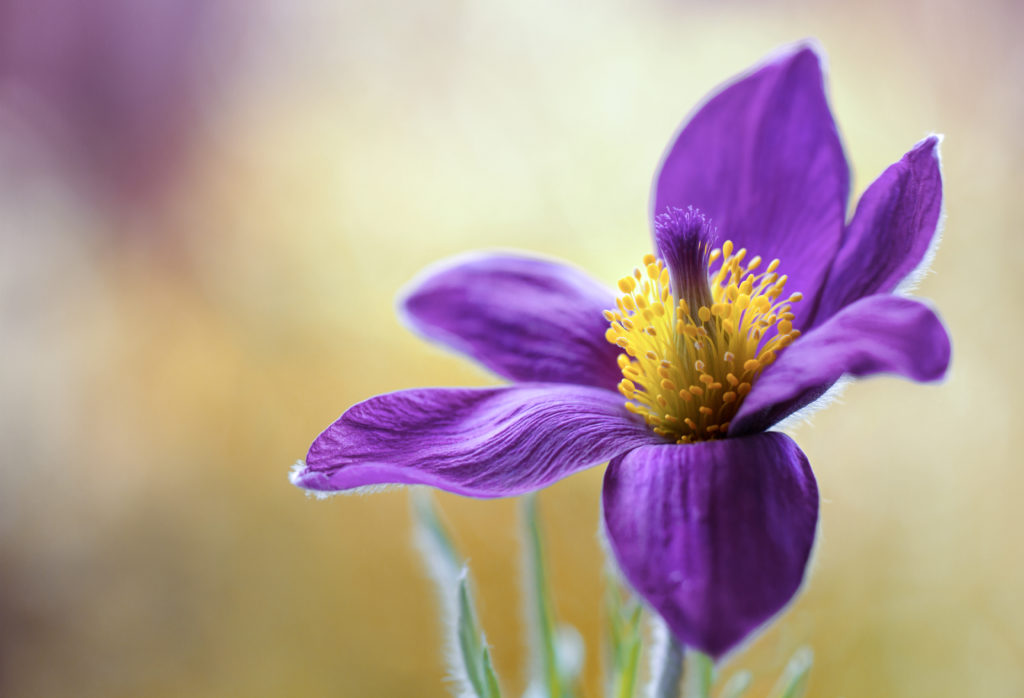A Deeper Peek at Pulsatilla
Last updated on July 22nd, 2022 at 03:35 pm

Every year after a long winter’s sleep, brilliant purple flowers peek out in the meadows and hillsides of central and northern Europe to herald the start of spring. Botanically, this flower is known as Pulsatilla vulgaris, but many gardeners refer to it as a wind or pasque flower. Whatever name you choose, this plant is used to produce a key homeopathic medicine indicated for many conditions, including common cold symptoms.
What’s in a Name?
When the Pulsatilla plant bears seeds, they dangle and sway in the wind, hence the name, which comes from the Latin word “pulsare”, meaning to sway or throb. Its common name “pasque flower” comes from the Old French word for Easter, a nod to the time when this flower blooms.
As part of the buttercup family, Pulsatilla grows in clusters with bell-shaped flowers and soft, fern-like foliage. Since it’s one of the first plants to bloom in spring, the shocking violet flowers are an impressive sight among a bleak landscape.
Medicinal Uses of Pulsatilla
The wind flower is known for its ability to relax spasms, making it a useful treatment for digestive and uterine pains as well as coughs. It is also helpful in clearing excess mucus that accompanies a head or chest cold. However, Pulsatilla should not be consumed because it is highly toxic. Nevertheless, it was used to treat problems of the male and female reproductive systems, including premenstrual syndrome.
When prepared homeopathically, Pulsatilla helps relieve a cold with a stuffy nose at night, runny during the day, and loss of smell and taste.* Yellow mucus is one of the tell-tale signs of a cold that could benefit from using this remedy. Pulsatilla can be found as one of the active ingredients in ColdCalm, as well as in Chestal Honey Syrup where it relieves a wet cough during the day that becomes dry at night.* In addition, this medicine can ease stomach discomfort caused by eating too much fatty food accompanied by bloating, belching, and slow digestion.*
To learn more about Boiron Pulsatilla and its uses, watch this video featuring pharmacist Gary Kracoff, NMD, RPh.
References
- Demarque D, Jouanny J, Poitevin B, Saint-Jean Y. Pharmacology and Homeopathic Materia Medica. 3rd ed. Sainte-Foy-lès-Lyon: CEDH; 2007.
- https://www.missouribotanicalgarden.org/PlantFinder/PlantFinderDetails.aspx?taxonid=286088&isprofile=0&
- https://www.fs.fed.us/wildflowers/plant-of-the-week/pulsatilla_patens_multifida.shtml
*Claims based on traditional homeopathic practice, not accepted medical evidence. Not FDA evaluated.






2 thoughts on “A Deeper Peek at Pulsatilla”
I need Pulsatilla 0.6 LM or Pulsatilla 200 Ck. homeopathic medicine. Is it available?
Hi Birgitte! We do not make LM dilutions of our medicines, but you can purchase CK dilutions of Pulsatilla here.